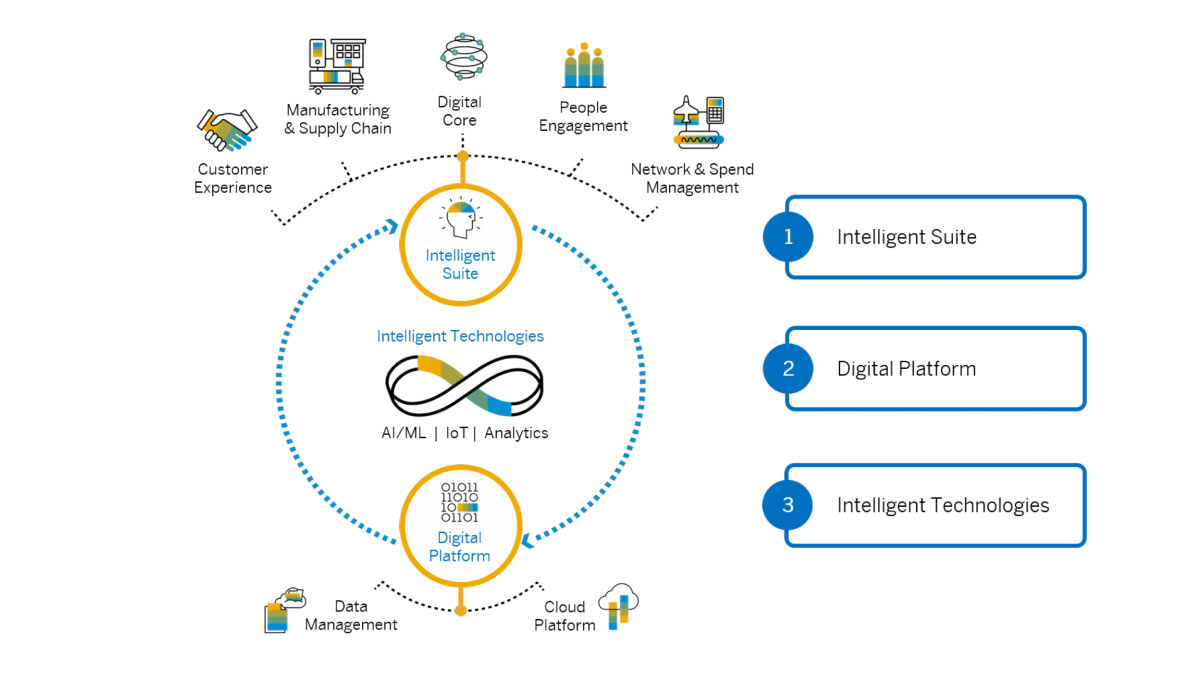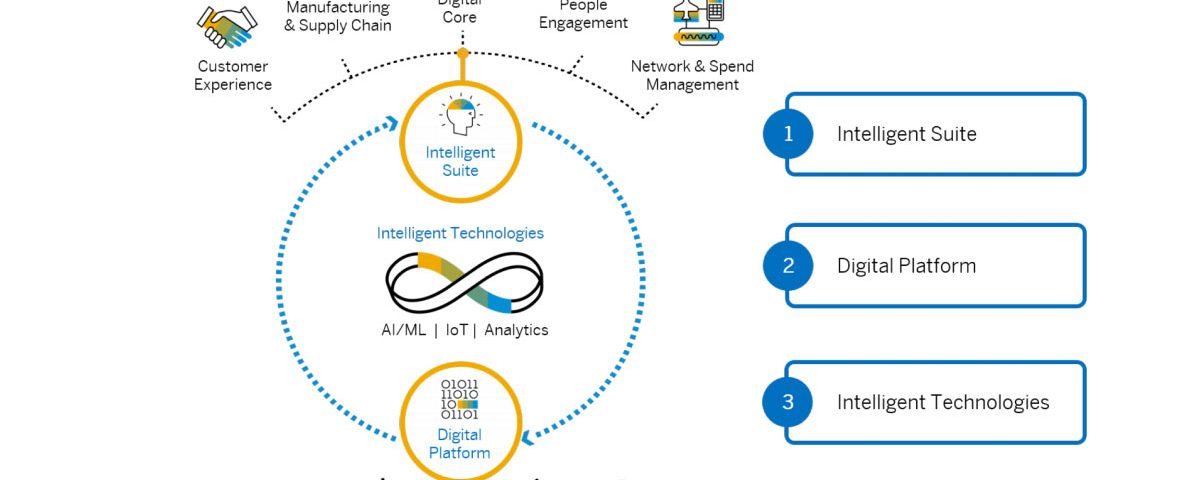
PIL and IBM collaborate to trial Lunar New Year delivery using IBM Blockchain Platform
February 1, 2019
SAP Helps Airlines Improve Travel Experience with IATA ONE Order Certification
February 1, 2019Every business – big or small, new or established – is a never-ending experiment. Rapid economic, political, social, and technological shifts make sitting still impossible if there is any hope of growth, profitability, and marketing leadership.
This new world order may sound scary to some executives. But for those who are aware of intelligent technologies, such as artificial intelligence (AI), automation, cloud, the Internet of Things (IoT), and predictive analytics, it can be a liberating moment. These business leaders are not only breaking down old ways of working but also matching the demands of the marketplace faster and more flexible than their competition.
Contrary to traditional thinking, constructing such an intelligent enterprise requires much more than purchasing, implementing, and using technologies that are shiny and new. It’s also about creating a unified network of employees, suppliers, and partners focused on driving operational and customer outcomes at the exact time and place they are expected and needed.
What Makes an Intelligent Enterprise Intelligent
Change has never been this fast nor will it ever be this slow again. However, this doesn’t mean businesses are mastering the art of evolution. In fact, it’s been widely said that eight out of 10 early digital transformation initiatives have failed.
For the two out of 10 that are doing well, their success can be attributed to a focus on three dimensions of significant business implications:
- Total customer experience: End-to-end processes are reimagined from the point of first interaction to order fulfillment and post-sales engagement. This can be accomplished by digitalizing products and services, monetizing data, or reinventing the business model.
- Step change in productivity: By combining digital technologies with processes and employee skills, companies can achieve a significant jump in business productivity, which, according to McKinsey, can range between 15 percent and 20 percent. This coveted improvement has the capacity to completely transform cost structures and profit models throughout the value chain.
- Employee engagement and support: Touch-less systems, automated processes, and similar technologies are the norm for an intelligent enterprise. These companies augment human capabilities to empower the workforce to undertake value-added work and manage exceptions.
This to-do list of the Intelligent Enterprise is endlessly supported by data – from having the right information and insights to executing decisions and actions. These businesses do not operate with traditional processes to get work done. Instead, they use a series of connected metaprocesses that combine every piece of data to generate real-time insights that then trigger transactions automatically.
How to Build the Foundation of a Data-Fueled, Outcome-Driven Operation
Framing the capabilities, skills, technology, and culture of an intelligent enterprise does not require deep pockets and unlimited resources. In fact, most businesses are already using main parts of the foundation. But, the real difference is how they connect them into a single system of unified, freely-exchanged information based on hard numbers, customer feedback, and reported observations.
This is where the concept of the digital framework of the Intelligent Enterprise comes in. The operating model leverages a portfolio of business applications connected by an enterprise resource planning (ERP) digital core running on a cloud-based, on-premise, or hybrid platform that manages and processes data in real time. Plus, it takes advantage of emerging technologies to uncover otherwise hidden data into clear insights and outcome-driven actions.

The components of this framework include:
- Intelligent suite: Centered on an ERP digital core, the other pillars of a business’s data ecosystem – customer experience, manufacturing and supply chain, people engagement, and network and spend management – have the fuel to generate insights and enable action. Together, the suite’s applications deliver strategic outcomes for customers, suppliers, and employees using applications with embedded intelligence.
- Digital platform: With a choice of running in the cloud, on premise, or a hybrid of the two environments, the digital platform is married to data management. It enables the collection, connection, and orchestration of data as well as the integration and extension of data-rich processes in integrated applications.
- Intelligent technologies: Embedded intelligence in business applications empowers people to use all company-wide data to detect patterns, predict outcomes, suggest actions, and trigger process execution.
When a Great Vision and Strategy is Coupled with Intelligent Execution
Much of the world is enjoying the benefits of intelligent technologies. And, any business that has not yet built the connections that unlock the full potential of these digital innovations are missing out on a range of insightful reports, tools, services, best practices, and skills.
When companies move forward with a great vision and strategy and couple them with intelligent execution, they create a platform for the continuous improvement of processes, people, and perspectives while leaving their competitors behind. And for this reason, amid the consistent bombardment of change and disruption that businesses experience every day, a transition to an intelligent enterprise becomes a matter of survival.
Discover the SAP blueprint that can help your business move from value discovery to value delivery. Read the whitepaper “Enabling the Intelligent Enterprise for Best-Run Businesses.”
This is part one of a five-part series “The Anatomy of the Intelligent Enterprise.” Over the next few weeks, we will examine how businesses can optimize the transition to an intelligent enterprise.
Oliver Huschke is global head solution of Marketing and Communications for SAP Digital Business Services. Follow him on LinkedIn and Twitter.





